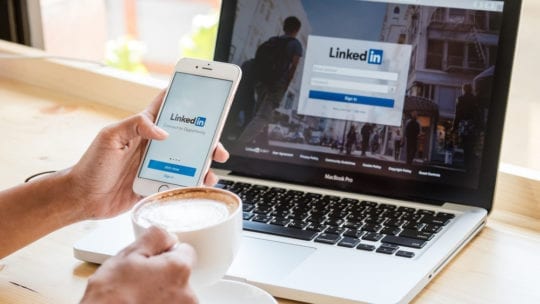
Although many brands have already made the shift to marketing and communicating on LinkedIn, some may be hesitant to jump into building a presence on LinkedIn because of preconceived notions about the platform and what kind of content it should contain. The good news is, a lot of those notions are likely wrong and should no longer hold you back.
In PR News’ Dec. 11 webinar “Using LinkedIn to Grow Your Brand’s Influence,” Brandon Ortiz, senior director of digital marketing at Salesforce.org and Byron Guo, senior lead, social media at Salesforce.org, shared some commonly-held myths about LinkedIn that they investigated and ultimately proved false before making their shift to LinkedIn as a primary platform for their organization.
Here are five myths you might also believe about LinkedIn, debunked:
Myth 1: LinkedIn Lacks the Power of Other Social Channels
When doing research to determine whether to make the switch to LinkedIn as Salesforce.org’s primary social media platform, Guo and Ortiz realized that approximately 72 percent of their organization’s site referral traffic year over year came from LinkedIn—compared to 6.24% YoY from Twitter and a nearly 30% decrease over the previous year from Facebook. They also found that their LinkedIn follower growth increased by nearly 64% versus their overall social media following, which grew by less than half that amount.
With 40 percent of monthly active users on LinkedIn accessing the platform daily, it’s time to stop discounting LinkedIn as “not a real social media platform” and look into investing your budget and resources toward building your presence there.
Myth 2: LinkedIn is Only for Job Seekers
“LinkedIn is for productivity. Instagram is for procrastination,” Guo said. Over the past few years, LinkedIn has grown from a job search platform to the premier place to check up on your peers in your industry and engage with crucial information about what’s going on in your field. Depending on your industry, this can be a key place to connect with potential consumers and followers, as well as talent—it does maintain that functionality after all.
Myth 3: While Good for Brand Awareness, LinkedIn Doesn’t Drive Real Engagement
Guo and Ortiz pointed out that LinkedIn targeting is superior in some ways to that of other social platforms. Namely that most people are keeping their profiles up to date so it’s easier to glean pertinent information for your advertising efforts, and its audience builder platform has proven useful for many brands. And, because it is more of a “professional” social channel, users are less sensitive to ad targeting that might be perceived as “creepy” elsewhere. Guo also pointed out that if your brand’s target user base is high-level executives and VPs, LinkedIn is the best place to do that.
Finally, Guo added that a video using LinkedIn’s recently-developed native video feature gets an average of 10-100 times more views than a link to a YouTube video. So engagement is not as scarce as you may think.
Myth 4: LinkedIn is not as Fun as Other Social Platforms
Though it’s still best to keep a professional demeanor in your posts on LinkedIn, you don’t have to be stuffy to have an impact on your audience. LinkedIn remains the best place to engage your employees as brand ambassadors, which can add a level of authenticity when users and prospective candidates hear about your company from the people who work there. The native video feature allows for more cinematic videos that might not hit as well on your Instagram story. And LinkedIn is conducive to longer-form content that doesn’t have a place on platforms like Twitter and Facebook. Plus, fewer trolls.
Myth 5: LinkedIn’s Back End is Not User Friendly
Ortiz and Guo did admit that they found this myth to be true, but until LinkedIn makes much-needed updates to its back end there are useful third-party tools that can help with this problem. They spoke about Salesforce.org’s Social Studio, which allows users to schedule posts in advance, engage with followers in real time and access analytics that LinkedIn currently doesn’t offer.
A final pro tip: time your posts for weekday mornings on East Coast time. Guo and Ortiz have found that timing to be the sweet spot for LinkedIn engagement.
Follow Hayley: @that_hayley
